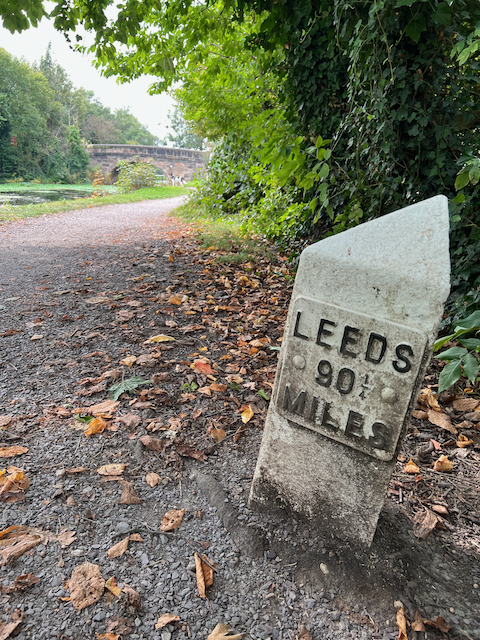The Romans left many imprints on our history and culture.
The most obvious and noticeable is our road network.
Many of Europe's roads and motorways are built over the original Roman roads that connected our emerging towns and cities.
This may be a self-fulfilling prophecy, in that the towns gained prominence because of the roads, and therefore the roads were enhanced. But, whichever way you cut it, the Romans had a hand in our transportation network.
At ever 1,000th double-step the Romans erected stone distance markers that enabled marching legions to measure progress in Miles (Mille is Latin for 1,000).
These stones, called Millarium were critical to military planning and logistics - and they were how the Romans knew that things were being accomplished.
Roman Millarium still exist in Britain today - but we added our own over time.
As our roads became routes for coach and horse travel, the need for distance markers became crucial - especially with the poor condition of muddy roads.
The term Milestone was coined in 1746. During the Georgian period, as manufacturing industries flourished, the investment in the road and canal network saw milestones become essential to day-to-day life.
The responsibility for Milestones was placed with Turnpike Trusts until they were disbanded in 1888 and the remit for managing the country's milestones was passed to local councils.
The Milestone's heyday was brief - the advent of train travel in the 1840s and then the invention of motorised transport resulted in a decline for the need for low-level distance markers and more dynamic eye-level travel signage evolved in the early 1900s
Because they were made from stone, milestones didn't rot away. According to the Milestone Society there are still 9,000 in the UK.
On Saturday, we walked the dog along a canal path in Wigan where I stumbled on a Milestone on the Liverpool Leeds canal. One side marked the distance to Liverpool, the other marked the distance to Leeds, presumably to help the owners of horse-drawn canal barges plan rest and feed stops for their Shire Horses.

What struck me about this particular milestone was its precision.
Despite being around 100 miles to Leeds, the marking states Leeds 90 and 1/4 miles.
Given that Leeds is a relatively long distance away (especially for a horse pulling a 25 tonne coal laden barge) the fact that the milestone adds the precision of a 0.25 mile overage speaks volumes for our Georgian engineering ancestors.
As I photographed it, I also contemplated that because milestones are fastened firmly to the ground, if you were to dig up a milestone and move it, its meaning changes. Sure, it's still a milestone, but it no longer matters in its original context.
This milestone anywhere else is totally irrelevant.
Next time you're looking at an MS Project Plan, or sat in a planning meeting where milestones are mentioned, remember:
- Although more modern ways of marking out journeys may have evolved over time, Milestones are still relevant
- Milestones were created by Romans to let you know that things are being accomplished
- Even if milestones mark something a long way off, they can still be precise (especially if you care about precision)
- Milestones don't perish - and you can move them if you like, but when you do they'll no longer matter in their original context.
- Be careful who you ask to manage your milestones, as passing the responsibility around from Romans, to Turnpike Trusts to Local Councils might result in their demise.
A final thought...

Here's a late 1896 Cheshire County Council Milestone close to my house that shows 1 mile to Warrington town centre.
I took this photo in December 2020 when I had originally intended writing this blog linking physical milestones to the small diamonds in MS Project.
But I only remembered that I'd missed the deadline when I walked past the Leeds milestone yesterday. Which goes to show how easy it is to miss milestones by 18 months if you don't plan properly.










